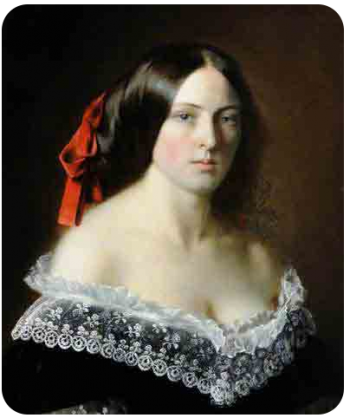There are permanent and temporary exhibitions in the gallery, and these are the works listed by Your Paintings as being housed in the gallery:
Jersey Heritage summary
The landscape and life of Jersey have inspired both local and visiting artists since the 18th century. The art collection contains around 6,000 works, mainly paintings, prints and drawings by local artists or depicting Jersey subjects. The highlights of this collection are on display in the Barreau Le Maistre art gallery in the Jersey Museum. The Gallery is named after two families whose generous bequests long ago have helped us to establish the exciting resource that we have today. In it examples of work produced in the 18th and 19th centuries by Jersey silversmiths and furniture makers are shown alongside highlights of the art collection.
Works by all of Jersey's noted artists are on show, including Sir John Everett Millais. Through their paintings P J Ouless and John Le Capelain have perhaps been the best ambassadors for the beauty of the island's coastline. Edmund Blampied is renowned for depicting the rural life of Jersey and the character of its people. Claude Cahun often used Jersey's landscape as a backdrop to her surrealist portraits.
Themes in Art
The Barreau Le Maistre Gallery also introduces some of the major subject themes into which artist traditionally divide their work. The most popular subjects are portraits and landscapes.
Philip John Ouless (1817-1885)
Shipbuilding was once a major industry in the Jersey, and island ships traded all over the world. Many of the proud owners wanted a visual record of their ships and artists such as P J Ouless became adept at producing "ship portraits". Although some portraits, like seascapes, depict the coastline, skies and atmosphere, the main point of these pictures was to give a detailed record of each ship and its rigging.
John Le Capelain ( 1812-1848)
John Le Capelain is best known for his atmospheric watercolour paintings of the island and its coastline, which were part of the Romantic Movement which reached its peak in Britain around the 1830. In 1846 Le Capelain was commissioned to paint a series of watercolours of Jersey which were presented by the States of Jersey to Queen Victoria in commemoration of her visit to the island on 2nd and 3rd September 1846. Shortly afterwards the Queen commissioned him to do a series of views of the Isle of Wight. Whilst there he developed tuberculosis and later died.
Sir John Everett Millais (1829-1896)
Sir John Everett Millais, born of Jersey parents, went on to become the most fashionable British painter of the 1880s. He is perhaps best known as a founder of the Pre-Raphaelite Brotherhood. From a very early age Millais showed a remarkable artistic ability, and in 1840 became the youngest ever student at The Royal Academy at the age of 11. His first picture to be accepted for the Royal Academy's exhibition was in 1846 when he was still only sixteen. Millais was elected associate of the Royal Academy in 1853 and, in 1885, became the first artist to be created a baronet. He later became the President of the Royal Academy.
In his later years Millais concentrated on portraiture, and in 1878 painted a portrait of another Jersey person, Lillie Langtry. The picture was painted at the height of Lillie's fame, by the most fashionable artist of the day, wearing the black dress that was to become her trademark. Both sitter and artist were part of the "in-crowd" of the fashionable society of poets and artists. Despite both of them having Jersey backgrounds, the lily is actually a Guernsey lily, not a Jersey lily. Edmund Blampied (1886 -1966) Edmund Blampied, whose prints and drawings are on display all over the island today, was also one the twentieth century's wittiest book illustrators. He is perhaps best known locally for his images of rural life.
Claude Cahun (1894-1954)
Claude Cahun lived in Jersey from 1937 until her death in 1954. She was an active member of the surrealist art movement. She is best known for her self-portraits, in which she often used costumes or masks as a way of exploring her identity. She lived in Jersey throughout the Occupation, carrying out resistance activities which eventually led to her being imprisoned and sentenced to death. Fortunately the sentence was communted and the island was liberated.
Gallery
Click on any image to see a full-size version
Attorney-General John William Dupre, 1853; H Hack
J Bertrand Payne; Philip de Laszlo
Solicitor-General George Helier Horman, 1880; William Hay



















































































































































